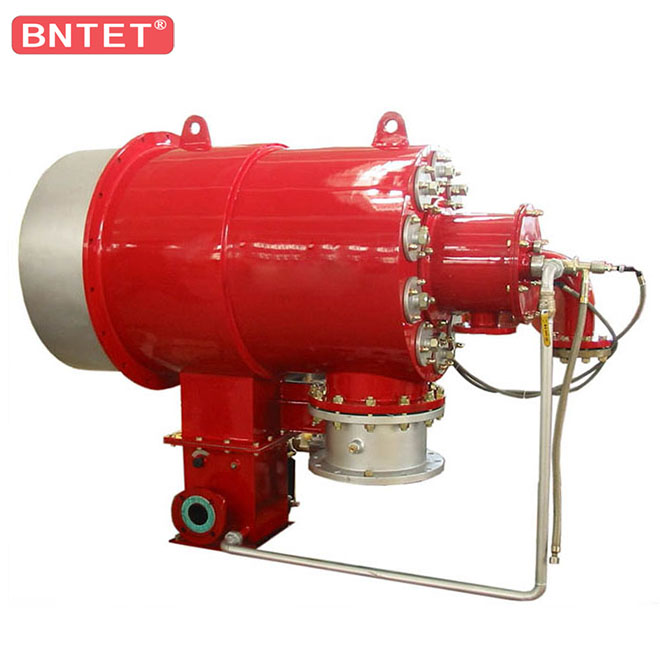Industrial producer gas, water gas, coke oven gas burners

Gas burners are usually called low calorific value burners and are used in boilers, steel furnaces, glass furnaces, dryers and other industrial equipment. Common gas types include producer gas, water gas, and coke oven gas. Do you know how the gas is produced? Let me explain to you:
Producer gas: The solid fuel is converted into gaseous fuel by the gas producer. There are many kinds of gas, such as coke oven gas, producer gas, water gas, oil gas, blast furnace gas, and cracked gas. The production method of producer gas is to burn coal in the producer and limit the air at the bottom of the furnace so that the coal cannot be completely burned, thus producing a large amount of carbon monoxide, which is producer gas. This method causes the main gases discharged from the furnace to be carbon monoxide, carbon dioxide and nitrogen.
The production method of water gas is to ignite the coal in the furnace, blow enough air into the furnace bottom to make the coal burn fiercely, then stop the fan, inject steam from the furnace bottom and the furnace top, and combine with the hot coal. A large amount of hydrogen and carbon monoxide are produced, and then mixed with the nitrogen in the air and the remaining water vapor to form water gas.
The production method of the coke oven gas burner is that the raw coal is pulverized, and after the coal is washed, it is mixed into the coke oven according to the proportion of different coal types, and the air is insulated for heating. The high temperature causes the coal to decompose to produce coal gas and coal tar. Coal or coke is used as raw materials, and air and steam are used as gasification agents to pass into the coal gas produced in the coal gas furnace. It is the most commonly used gasification coal gas and is produced by the moving bed gasification method. The production plant is called a gas generating station. The gasification process of the generator: the gasification raw materials are put into the furnace from the top of the furnace. The entire fuel layer is supported by the grate. The gasification agent enters from the bottom of the grate, is evenly distributed through the grate, and contacts the fuel layer to cause a gasification reaction. The generated gas is drawn from above the fuel layer. The remaining ash is discharged from the bottom of the grate. This kind of gas-solid two-phase countercurrent operation furnace can make full use of the heat of the ash and slag to preheat the gasification agent, and can also make full use of the sensible heat of the gas rising from the gasification layer to heat the fuel, dry and pyrolyze it, Thereby, the thermal efficiency of the furnace is improved; and the volatile matter in the fuel does not undergo high-temperature cracking, so that the calorific value of the gas is increased. The tapped gas contains CO, H2, CO2, N2, CH4, C2H4, H2S, H2O, nitrides and tar vapors. The calorific value of the gas after cooling and purification is about 5.0-6.5MJ/m, depending on the nature of the raw materials and operating conditions.